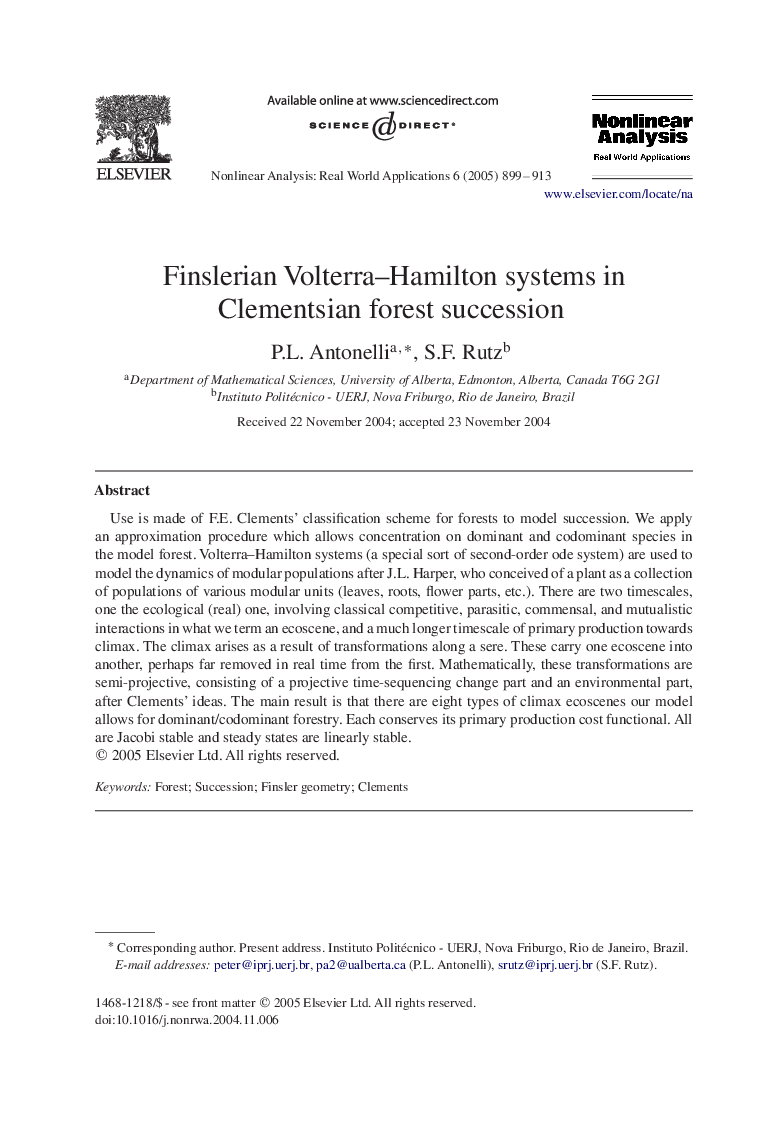| Article ID | Journal | Published Year | Pages | File Type |
|---|---|---|---|---|
| 10426655 | Nonlinear Analysis: Real World Applications | 2005 | 15 Pages |
Abstract
Use is made of F.E. Clements' classification scheme for forests to model succession. We apply an approximation procedure which allows concentration on dominant and codominant species in the model forest. Volterra-Hamilton systems (a special sort of second-order ode system) are used to model the dynamics of modular populations after J.L. Harper, who conceived of a plant as a collection of populations of various modular units (leaves, roots, flower parts, etc.). There are two timescales, one the ecological (real) one, involving classical competitive, parasitic, commensal, and mutualistic interactions in what we term an ecoscene, and a much longer timescale of primary production towards climax. The climax arises as a result of transformations along a sere. These carry one ecoscene into another, perhaps far removed in real time from the first. Mathematically, these transformations are semi-projective, consisting of a projective time-sequencing change part and an environmental part, after Clements' ideas. The main result is that there are eight types of climax ecoscenes our model allows for dominant/codominant forestry. Each conserves its primary production cost functional. All are Jacobi stable and steady states are linearly stable.
Keywords
Related Topics
Physical Sciences and Engineering
Engineering
Engineering (General)
Authors
P.L. Antonelli, S.F. Rutz,
